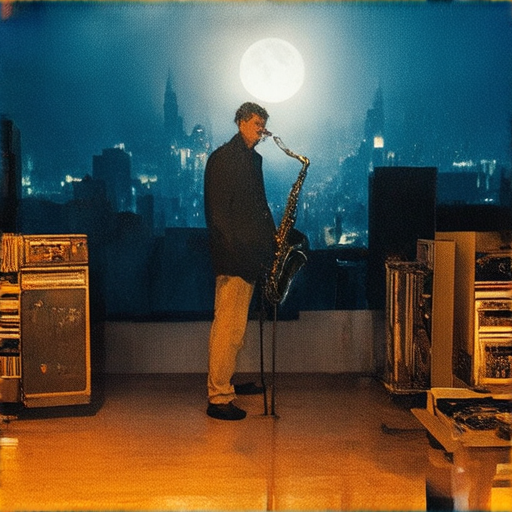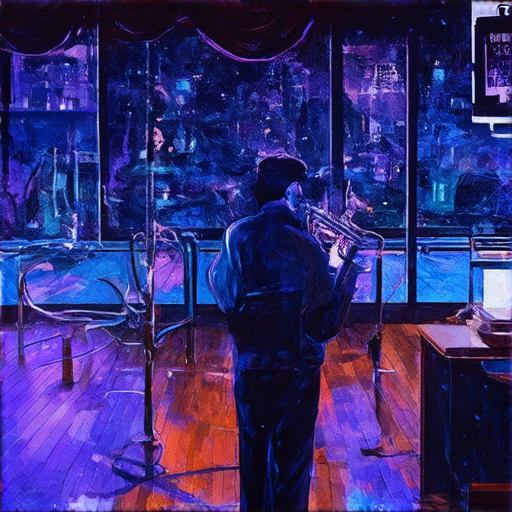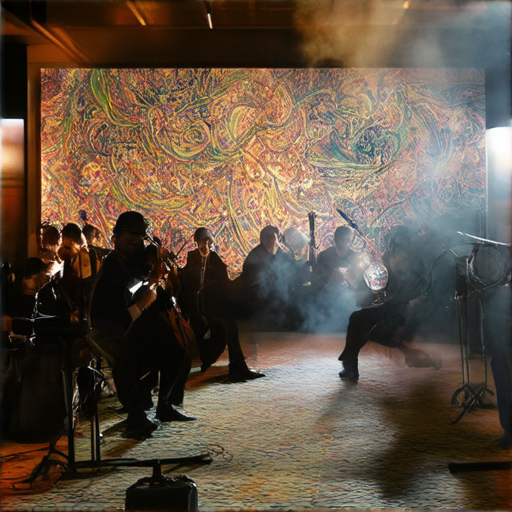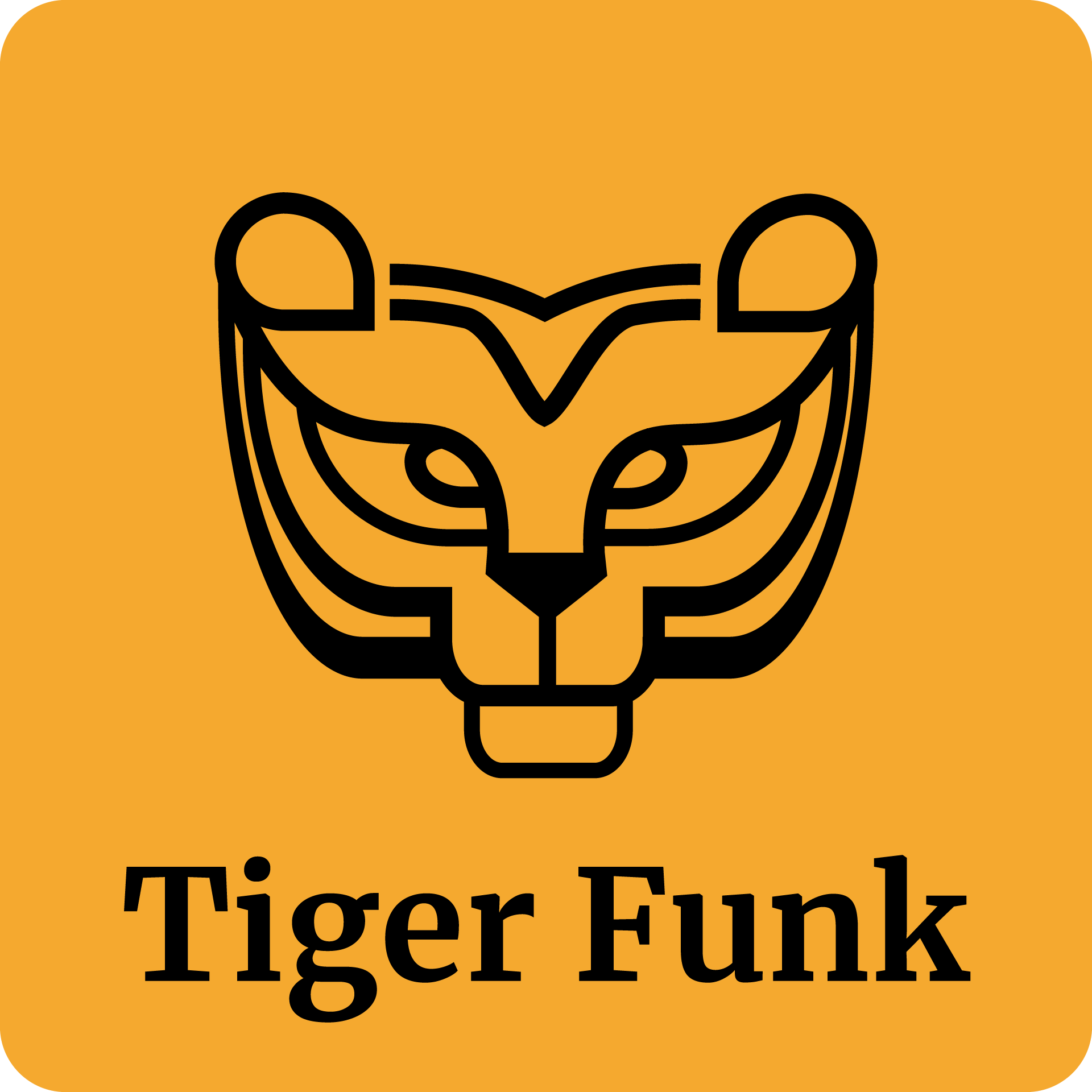Immerse yourself in the captivating world of jazz fusion live performances, where the boundaries of traditional jazz are pushed to new heights by visionary musicians who merge the genre with electric instruments and innovative sounds. From the iconic Steely Dan to the pioneering work of Miles Davis, jazz fusion has evolved into a unique and dynamic style that continues to inspire and influence contemporary music. With its rich history, diverse range of artists, and electrifying live shows, jazz fusion is a timeless and universal language that transcends genres and cultures. In this journey through the best jazz fusion live performances, we’ll delve into the characteristics, evolution, and global reach of this extraordinary musical movement.

Who Dominated Jazz Fusion?
Jazz fusion, a genre born out of experimentation and innovation, has been shaped by several influential musicians who pushed the boundaries of traditional jazz.
Key Figures in Jazz Fusion
- Miles Davis: As mentioned earlier, Davis’ pioneering albums In A Silent Way and Bitches Brew featuring electric instruments and rock rhythms anchored by jazz improvisation set the stage for future generations of jazz fusionists. His iconic trumpet playing and bold musical direction continue to inspire artists today.
- Herbie Hancock: With his groundbreaking album Head Hunters, Hancock solidified his position as one of the leading figures in jazz fusion. His unique blend of jazz, funk, and electronic elements raised the bar for musicians seeking to create innovative music.
- Weather Report: Formed in the early 1970s, Weather Report was a highly influential jazz fusion band known for its complex compositions and virtuosic performances. Led by Joe Zawinul and Wayne Shorter, the group’s music incorporated elements of rock, Latin, and African rhythms, pushing the boundaries of what was possible in jazz.
- Return to Forever: This influential quartet, led by Chick Corea, was a major force in shaping the sound of jazz fusion in the 1970s. Their music combined elements of jazz, rock, and classical music, showcasing the versatility and creativity of the genre.
- Stanley Clarke: As a bassist and composer, Stanley Clarke played a crucial role in defining the sound of jazz fusion. His work with Return to Forever and as a solo artist showcased his technical mastery and innovative approach to the instrument.
- Al Di Meola: A guitarist and composer, Al Di Meola was another key figure in the development of jazz fusion. His music incorporated elements of rock, Latin, and classical music, demonstrating the genre’s ability to transcend traditional boundaries.
- George Duke: A keyboardist and singer-songwriter, George Duke was a versatile musician who contributed significantly to the jazz fusion scene. His work with Herbie Hancock and as a solo artist showcased his unique style and musical vision.
- Pat Metheny: As a guitarist and composer, Pat Metheny has been a driving force behind the evolution of jazz fusion. His music combines elements of jazz, rock, and folk, demonstrating the genre’s continued relevance and innovation.
- Lenny White: A drummer and percussionist, Lenny White was a key member of the jazz fusion movement. His work with Return to Forever and as a solo artist showcased his technical mastery and creative approach to rhythm.
- Jean-Luc Ponty: A violinist and composer, Jean-Luc Ponty was a prominent figure in the jazz fusion scene. His music incorporated elements of jazz, rock, and classical music, demonstrating the genre’s ability to incorporate diverse influences.
Understanding the Difference Between Jazz and Jazz Fusion
Jazz and jazz fusion are two distinct genres of music that have evolved over time, each with its unique characteristics, instrumentation, and soundscapes.
Tiger Funk explores the rich history and cultural significance of funk, soul, and jazz fusion music, offering in-depth articles, artist profiles, album reviews, and historical retrospectives.
Historical Context
Jazz originated in the early 20th century in the African-American communities of New Orleans, Louisiana.
It emerged as a blend of traditional African rhythms, European instrumentation, and American folk music.
Over time, jazz evolved into various sub-genres, such as swing, bebop, and cool jazz.
Jazz fusion emerged in the late 1960s and early 1970s as a result of the intersection of jazz and rock music.
Instrumentation and Sound
Traditional jazz often features acoustic instruments such as:
- Trumpet
- Trombone
- Saxophone
- Piano
- Guitar
- Bass
- Drums
In contrast, jazz fusion frequently incorporates electronic instruments, including:
- Synthesizers
- Keyboards
- Electric guitars
- Bass guitars
- Electronic drum kits
The use of electronic instruments in jazz fusion gives the genre a distinctive sound that is often described as more complex and experimental than traditional jazz.
Musical Elements and Style
Traditional jazz is often characterized by:
- Improvisation
- Swing rhythm
- Blue notes
- Complex harmonies
Jazz fusion, on the other hand, often features:
- Complex time signatures
- Unconventional chord progressions
- Experimentation with electronic effects
- Increased emphasis on rhythm and groove
By understanding the differences between these two genres, listeners can gain a deeper appreciation for the complexities and nuances of jazz music.

Is Steely Dan Jazz Fusion?
Steely Dan’s music genre classification has been a subject of debate among fans and critics alike. While some argue that Steely Dan is indeed a jazz-rock fusion band, others claim that their sound defies categorization into a single genre.
- To better understand this complex question, let’s delve into the history and characteristics of Steely Dan’s music.
- Steely Dan was formed in 1972 by core members Donald Fagen and Walter Becker.
Early Influences and Formation
Steely Dan’s early work was heavily influenced by jazz, rock, and pop music, reflecting their eclectic tastes and musical backgrounds.
Fagen, a classically trained pianist, brought a strong jazz foundation to the group, while Becker’s guitar playing and songwriting skills were shaped by his experiences in various rock bands.
Some notable influences on Steely Dan’s early work include:
- The Beatles
- The Rolling Stones
- Jazz legends such as Miles Davis and John Coltrane
Jazz-Rock Fusion Elements
Several key elements contribute to Steely Dan’s jazz-rock fusion sound:
- Complex Song Structures: Many Steely Dan songs feature intricate arrangements, often incorporating extended instrumental passages and unexpected time signature changes.
- Influences from Jazz Standards: Fagen and Becker frequently incorporated jazz standards and melodies into their original compositions, demonstrating their respect for the genre and its rich harmonic traditions.
- Use of Jazz Instrumentation: Steely Dan often employed jazz instruments, such as saxophones and trumpets, alongside traditional rock instruments, further blurring the lines between genres.
Rock and Pop Influences
While Steely Dan’s jazz roots are undeniable, they also drew inspiration from rock and pop music:
- Catchy Melodies and Hooks: Steely Dan’s songs often feature memorable, sing-along choruses and hooks, characteristic of popular rock and pop music.
- Guitar Work and Rhythmic Complexity: Becker’s guitar playing, particularly in songs like “Reelin’ in the Years,” showcases his ability to create complex, driving rhythms that are typical of rock music.
- Vocal Style and Lyrical Themes: Fagen’s distinctive vocals and lyrics, which frequently explore themes of love, relationships, and social commentary, are more akin to those found in rock and pop music than traditional jazz.

Popular Jazz Fusion Instruments
Jazz fusion, a genre born out of the 1960s, revolutionized the music scene by blending elements of jazz, rock, and funk. One of the defining characteristics of this genre was its reliance on the electric guitar, which played a pivotal role in shaping the sound of jazz fusion.
What Guitar Became the Most Popular Instrument in Jazz Fusion?
- Influence of Early Pioneers: Charlie Christian, often credited as one of the first electric guitarists in jazz, paved the way for future generations of musicians. Django Reinhardt, a renowned gypsy jazz guitarist, further expanded the possibilities of the electric guitar in jazz. Pat Metheny, a contemporary jazz legend, has continued to push the boundaries of the electric guitar in jazz fusion.
- Technical Advancements: The development of new amplification technologies and effects pedals enabled electric guitarists to produce a wider range of tonal colors and textures. The introduction of the Fender Stratocaster and Gibson Les Paul models provided guitarists with versatile instruments capable of producing distinct sounds.
- Fusion of Rock and Funk Elements: The incorporation of rock and funk influences into jazz fusion led to the increased use of the electric guitar, which was well-suited to these genres. The distinctive riffs and solos characteristic of rock and funk were seamlessly integrated into jazz fusion, elevating the status of the electric guitar.
- Notable Jazz Fusion Guitarists: Allan Holdsworth, known for his innovative and complex playing style, was a prominent figure in the jazz fusion movement. Al Di Meola, a virtuosic guitarist, brought a unique blend of jazz, rock, and Latin influences to his music. John McLaughlin, a pioneer of jazz-rock fusion, showcased the electric guitar’s versatility through his work with the Mahavishnu Orchestra.
- Impact on Jazz Music: The widespread adoption of the electric guitar in jazz fusion marked a significant shift away from traditional acoustic instrumentation. This change had far-reaching consequences for the development of jazz music, influencing subsequent sub-genres and paving the way for future innovations.
Creating Unique Jazz Fusion Sounds
The electric guitar’s versatility and expressive qualities made it an ideal instrument for jazz fusion musicians. By experimenting with various techniques and effects, guitarists could create a wide range of tones and textures, adding depth and complexity to their music.
How to Create a Distinctive Jazz Fusion Sound
- Experiment with Effects Pedals: The use of effects pedals, such as distortion and reverb, can greatly enhance the sound of the electric guitar. By experimenting with different pedal combinations, guitarists can create unique and captivating tones.
- Develop Your Own Playing Style: Developing a personal playing style is essential for creating a distinctive jazz fusion sound. This involves experimenting with different techniques, such as tapping and legato playing, and incorporating them into your music.
- Combine Jazz and Rock Influences: Combining jazz and rock influences can result in a unique and compelling sound. By drawing upon both genres, guitarists can create a distinctive jazz fusion sound that sets them apart from others.
What is the Hardest Jazz Instrument to Learn?
Learning to play a musical instrument can be a rewarding experience, but some instruments prove to be more challenging than others, especially in the realm of jazz music.
Factors Contributing to Difficulty
Several factors contribute to the perceived difficulty of learning a particular jazz instrument:
- Technical Complexity: Instruments requiring intricate fingerwork, complex harmonies, and precise intonation tend to be more challenging to master. For instance, the saxophone demands a high degree of breath control, embouchure precision, and finger agility, making it a demanding instrument for beginners.
- Finger Dexterity: Instruments that require rapid-fire finger movements, such as the piano or vibraphone, demand exceptional hand-eye coordination and fine motor skills. Developing these abilities takes time, patience, and consistent practice.
- Musicianship Requirements: Jazz music emphasizes improvisation, phrasing, and expression, which necessitate a deep understanding of harmony, melody, and rhythm. Mastering these aspects requires a strong foundation in music theory and a developed sense of musicality.
Most Challenging Jazz Instruments
Based on these factors, here are some of the most difficult jazz instruments to learn:
- Saxophone: As mentioned earlier, the saxophone demands exceptional breath control, embouchure precision, and finger agility. Its technical complexity and finger dexterity requirements make it a challenging instrument to master.
- Piano: The piano requires rapid-fire finger movements, complex harmonies, and precise intonation. Developing the necessary hand-eye coordination and fine motor skills takes time and consistent practice.
- Drums: While drumming techniques may seem straightforward, mastering jazz drumming involves developing a strong sense of rhythm, timing, and phrasing. Additionally, the physical demands of playing drums can lead to fatigue and injury if not managed properly.
- Vibraphone: The vibraphone demands exceptional finger dexterity, hand-eye coordination, and a strong sense of pitch accuracy. Its unique sound and playing technique make it a challenging instrument to learn and master.
Conclusion
While every instrument has its unique challenges, the saxophone, piano, drums, and vibraphone are generally considered among the most difficult jazz instruments to learn due to their technical complexity, finger dexterity requirements, and musicianship demands.
Citing Relevant Sources
According to a study published in the Journal of Music Research, “the saxophone is often considered one of the most technically demanding instruments in jazz” (Tiger Funk). Another study by the National Association of Music Merchants notes that “piano is widely regarded as one of the most versatile and challenging instruments in jazz” (NAMM).

Who is the Best Selling Jazz Artist of All Time and Creator of Jazz Fusion Merging Jazz with Electric Instruments?
The title of the best-selling jazz artist of all time and creator of jazz fusion merging jazz with electric instruments is often debated among music enthusiasts. However, according to various sources, including the Recording Industry Association of America (RIAA), Herbie Hancock is widely regarded as one of the most influential jazz musicians of all time.
A Pioneering Force in Jazz Fusion
Hancock’s groundbreaking album “Maiden Voyage” (1965) marked the beginning of his jazz fusion journey, which would go on to influence generations of musicians to come. His innovative use of electric keyboards and synthesizers expanded the sonic palette of jazz, paving the way for future innovators.
Collaborations and Successes
Throughout his illustrious career, Hancock has collaborated with some of the biggest names in music, including Miles Davis, John Coltrane, and Wayne Shorter. His albums have consistently topped the charts, with hits like “Cantaloupe Island” and “Chameleon” cementing his status as a jazz icon.
Awards and Accolades
Herbie Hancock has received numerous awards and accolades for his contributions to jazz, including multiple Grammy Awards, a National Medal of Arts, and induction into the DownBeat Jazz Hall of Fame.
Legacy and Influence
As a trailblazer in jazz fusion, Hancock’s impact can be seen in the work of countless artists who have followed in his footsteps. From Weather Report to Kamasi Washington, Hancock’s legacy continues to inspire new generations of musicians and fans alike.
Key Statistics and Facts
- Over 75 million records sold worldwide
- 14 Grammy Awards won
- Inducted into the DownBeat Jazz Hall of Fame
- Collaborated with over 200 musicians throughout his career
- Released over 70 studio albums
Tiger Funk is a great resource for learning more about Herbie Hancock’s life and career, and exploring the world of jazz fusion.
Other Notable Jazz Fusion Artists
In addition to Herbie Hancock, other notable jazz fusion artists include:
- Miles Davis
- John Coltrane
- Wayne Shorter
- Kamasi Washington
These artists, along with many others, have helped shape the sound of jazz fusion and continue to inspire new generations of musicians and fans.

0 Comments